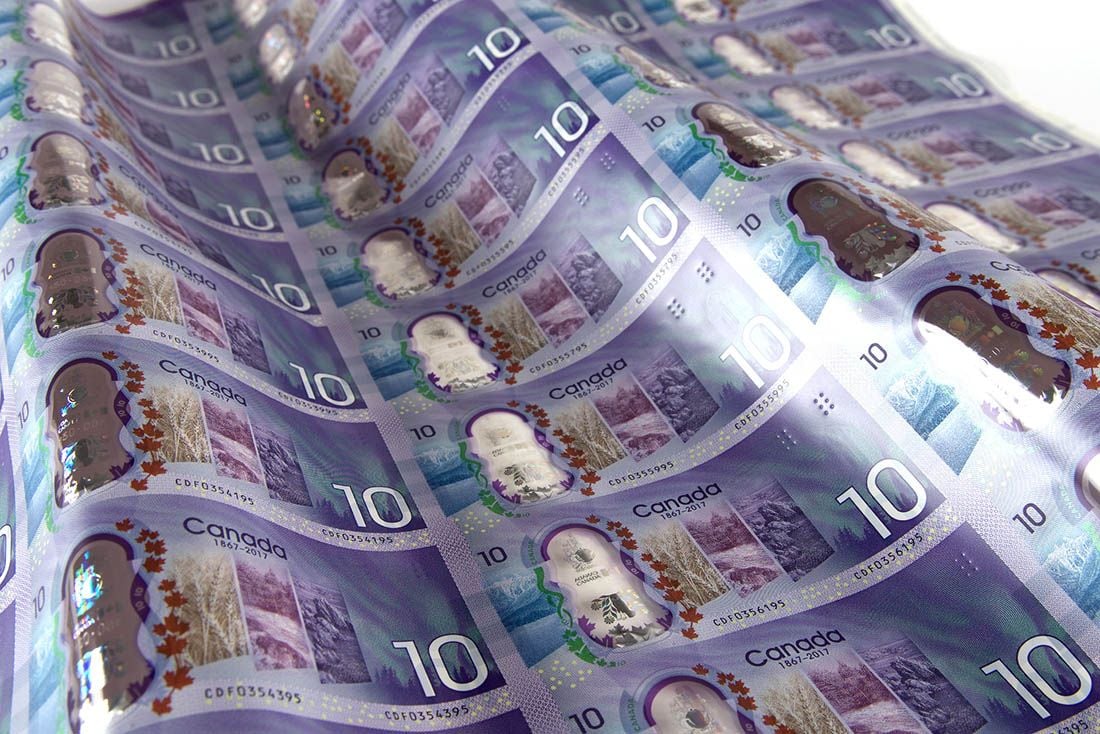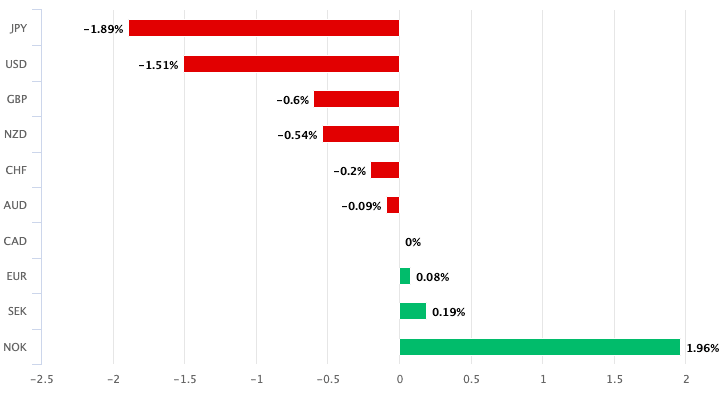Canadian Dollar Forecast to Outperform Near-Term by Barclays
- CAD endures losses over past week
- But, numerous factors point to a recovery says Barclays
- Biden win tipped as being CAD supportive

Image © Bank of Canada
- GBP/CAD spot rate at time of publication: 1.7249
- Bank transfer rates (indicative guide): 1.6645-1.6766
- Specialist provider rates (indicative guide): 1.6855-1.7094
- More information on specialist rates, here
- Order your ideal exchange rate when it is triggered, here
The Canadian Dollar is nursing losses against the Pound, U.S. Dollar and the majority of the world's nine largest currencies in a week dominated by falling stock markets and a Bank of Canada decision to enhance its quantitative easing programme.
However losses could prove to be short-lived in duration with strategists at investment bank Barclays saying they expect the North American currency to outperform its peers over coming weeks, citing a better management of the covid-19 health crisis in Canada when compared to peers as well as the provision of generous financial support by the government.
"We see room for CAD outperformance in the near term," says Juan Prada, FX Strategist at Barclays. "On the domestic side, the rebound in employment and GDP has been stronger than expected, and even if rising COVID-19 cases pose downside risks for the recovery, low fatality and test-positivity rates suggest a better management of the health crisis in Canada relative to its G10 peers."
While covid-19 concerns are rising across the Northern Hemisphere, and Canada is unlikely to be immune, the strong financial support offered by the government could limit the potential downside impact of a second wave of covid-19 infections and lockdowns.
"Canada has already provided fiscal support close to 17% of its GDP, which is high compared with its peers. Furthermore, the recently extended fiscal measures, including broadened eligibility for employment insurance and new benefit programmes, indicate that fiscal policy will continue to provide support to the economy," says Prada.
The Canadian Dollar fell in midweek trade after the Bank of Canada (BoC) said it will now target longer-term Canadian government bond yields with its quantitative easing programme, as policy makers signalled concerns with the outlook for the global and domestic economy.
The BoC surprised nobody when they told markets on Wednesday that they're holding cash rate "at the effective lower bound" of 0.25% "until economic slack is absorbed so that the 2 percent inflation target is sustainably achieved," echoing the BoC's previous statement in September.
But what may have taken the market by surprise was the BoC's decision to recalibrate its quantitative easing programme, and in a way that turns all of its firepower onto longer-term government yields, which are among the highest in the developed world and a source of support for the Loonie.
The Pound-to-Canadian Dollar exchange rate hit a one-week high at 1.7350 in the wake of the BoC event and Sterling is looking to record a 0.60% weekly advance ahead of the weekend. Meanwhile the U.S. Dollar-Canadian Dollar rate rallied to a high of 1.3389 in the wake fo the BoC and this week's advance stands at 1.50% ahead of the weekend.

Above: CAD relative performance over the past week. If you are concerned by market movements and would like to protect your international payments budget we would suggest seeing what tools are available to you to do so. For instance, you can lock in today's rate for use over coming months, learn more here.
The BoC-inspired decline was exacerbated by a downturn in global stock markets which tend to create conditions sympathetic to Canadian Dollar weakness.
"Day-to-day movements in risk (using the S&P as a somewhat and admittedly crude measure of risk appetite) are the predominant driver of Developed Market FX at the moment," says John Velis, FX and Macro Strategist, Americas, at BNY Mellon.
According to Velis, the correlation of the Canadian Dollar with the U.S. equity market "is the highest in the G10 and its USD beta is almost exactly 1."
Given the linkage, a decline in the S&P500 index of 4.5% so far this week therefore creates a negative backdrop for the Canadian Dollar.
"This underscores the view that what happens to the USD is what happens to CAD, and what happens to the USD is what happens with the equity market, which is itself a function of policy and political risk – currently, the Fiscal 4.0 discussion and the odds of a Biden victory," says Velis.
However, it is this exposure to the U.S. economy that could set the Canadian Dollar in good standing over coming weeks according to Barclays.
"On the external front, prediction markets continue to assign an elevated probability of a 'Democratic sweep' scenario for the US election, an outcome that would likely result in a major expansion of US fiscal policy," says Prada. "We think Canada would be one of the main beneficiaries given its closely integrated supply chains with the US, while a potentially less uncertain trade policy (eliminating the continuous threats on aluminium tariffs, for example) would also be CAD positive."
The analyst says commodity and oil prices could also get a boost from higher U.S. growth and lower trade uncertainty they would expect under a potential Biden win.
Barclays analysis meanwhile suggests the Canadian Dollar is somewhat undervalued when compared to some of its peers, suggesting the market is structurally sympathetic to a move higher.
For indepth forecast data - including the average GBP/CAD forecast by the world's leading investment banks - as well as individual forecasts from the likes of Citi, JP Morgan, Morgan Stanley, Lloyds, Barclays and more - please see the latest guide available at our partners Global Reach.




